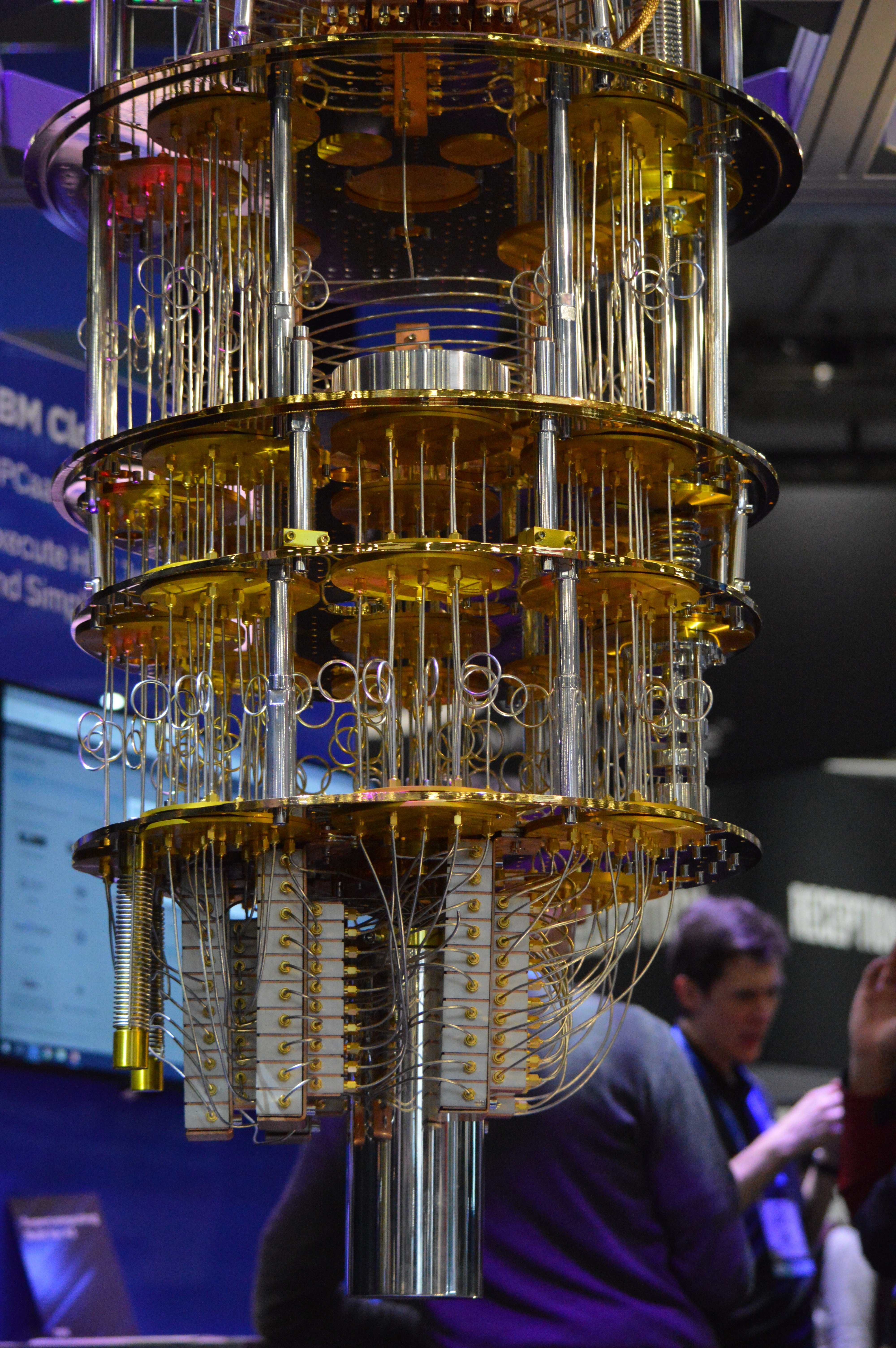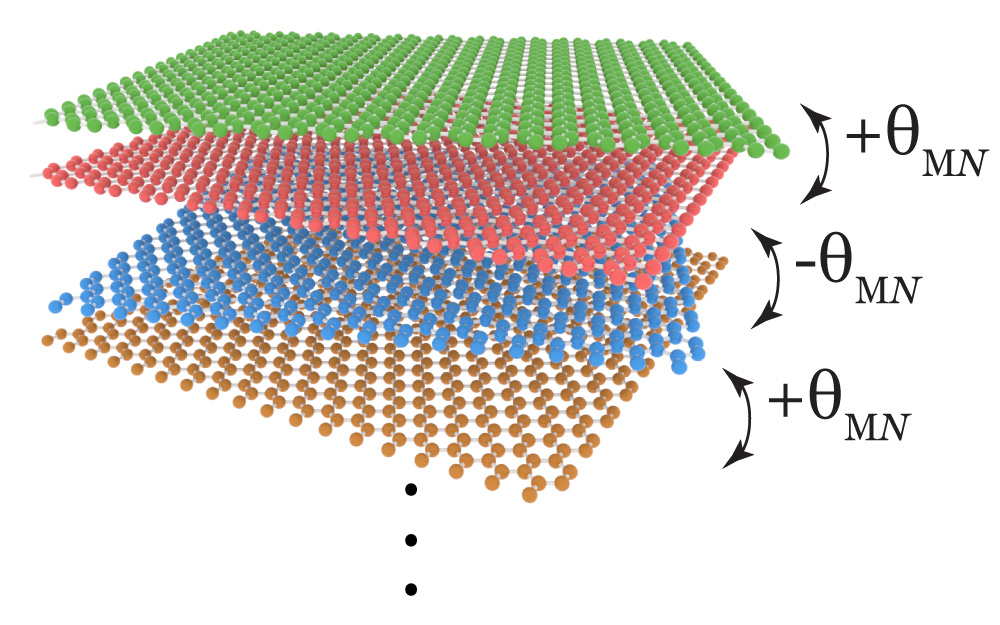Quantum Computing: Breakthrough in Trapping Molecules
Quantum computing stands at the forefront of technological innovation, promising to revolutionize the way we process information. Researchers have recently made significant breakthroughs by successfully trapping molecules to facilitate quantum operations, marking a pivotal step toward creating a molecular quantum computer. This remarkable achievement opens new doors in enhancing computational speed and complexity, leveraging the intricate structures of trapped molecules as qubits. By harnessing quantum mechanics and sophisticated quantum gates, scientists are unlocking the potential for unprecedented advancements across various fields such as medicine and finance. The meticulous control of quantum states and operations highlights the power of molecular systems in the rapidly evolving landscape of quantum computing.
The realm of advanced computation is rapidly evolving with the advent of quantum mechanics-inspired technologies. One of the most promising developments is the use of trapped molecular systems, which allow researchers to perform intricate quantum operations. This approach not only capitalizes on the unique properties of molecules but also integrates cutting-edge techniques to manipulate their quantum states. As scientists explore these novel avenues in quantum technology, they are paving the way for highly efficient computational frameworks that could surpass conventional computing limitations. The quest for quantum supremacy continues, fueled by innovative strategies and breakthroughs in the manipulation of molecular structures.
The Evolution of Quantum Computing: A Brief History
Since its inception, quantum computing has continuously evolved, driven by the desire to leverage the peculiarities of quantum mechanics for computational superiority. The journey began in the 1980s when researchers first began theorizing about quantum bits or qubits, the basic units of quantum information. Over the years, various methods have been explored to realize practical quantum computers, with initial experiments focusing on simpler systems like trapped ions and superconductors. As success with these technologies emerged, scientists began exploring the use of more complex systems, such as molecules, which promise far greater computational power but also pose significant challenges due to their delicate nature.
The importance of effectively trapping molecules in quantum operations cannot be overstated. The complexities inherent in molecular structures, including their hyperfine states and rotational degrees of freedom, present both obstacles and opportunities. With significant advances made recently, such as those demonstrated by the Harvard team, we are witnessing a pivotal moment in the evolution of quantum computing. Researchers are unlocking new dimensional capabilities by moving beyond simpler systems to design molecular quantum computers, aiming to see this technology transition from theoretical models to practical, functional devices.
Understanding Quantum Gates and Their Role in Quantum Operations
At the core of quantum computing lies the concept of quantum gates, the quantum analogue to classical logic gates that allow for the manipulation of qubits. Unlike classical bits, qubits can exist in superpositions of states, enabling quantum gates to perform a variety of computations simultaneously. This intrinsic parallelism is a hallmark of quantum operations that sets quantum computing apart from its classical counterparts. Recent developments, such as the successful entanglement of trapped molecules to create two-qubit Bell states, illustrate the potential that sophisticated quantum gates have in creating entangled systems.
The team at Harvard achieved a significant breakthrough by constructing an iSWAP gate, a pivotal component in quantum circuits that facilitates the generation of entanglement. By using optical tweezers to trap molecules, they executed the quantum operation with remarkable precision, achieving an impressive accuracy rate. This exemplifies how the advancements in trapping molecules can directly influence the integrity and efficiency of quantum operations, marking a crucial step towards more robust quantum computing systems. As research progresses, understanding the mechanics of these quantum gates and their interactions with molecular qubits will be key to optimizing quantum algorithms and developing new applications in various fields.
The Role of Trapped Molecules in Enhancing Quantum Computing
Trapped molecules represent a remarkable frontier in quantum computing, offering unique advantages that can enhance computational efficiency. The ability to manipulate ultra-cold polar molecules as qubits enables researchers to harness their complex internal structures, which can lead to novel quantum states and operations. The Harvard team’s recent success in trapping sodium-cesium (NaCs) molecules and performing quantum operations lays the groundwork for a new generation of quantum computers that leverage the intricate properties of molecular interactions, potentially achieving higher levels of entanglement and coherence.
Additionally, trapped molecules allow for the implementation of quantum operations that were previously unattainable with simpler systems. The complexity of molecular configurations provides avenues for enriching quantum computing capabilities, enabling researchers to explore more sophisticated algorithms and applications. This exploration could lead to breakthroughs in areas such as materials science, cryptography, and optimization problems, where quantum computations could outperform classical methods significantly. As researchers delve deeper into the potential of trapped molecules, we can expect a paradigm shift in how quantum systems are designed and executed.
Challenges of Molecular Quantum Computing: Overcoming Unpredictability
While the promise of molecular quantum computing is immense, the inherent unpredictability of molecular movements poses significant challenges. Molecules, due to their intricate structures, tend to be more unstable compared to other quantum computing methods such as trapped ions or superconducting qubits. This instability can lead to decoherence, a phenomenon where the qubit loses its quantum state, thus jeopardizing the integrity of quantum operations.
To combat these challenges, the Harvard research team utilized ultra-cold environments to minimize molecular motion, which allows for greater control over quantum states. This meticulous control is critical for maintaining coherence during quantum operations and illustrates the innovative techniques researchers are developing to stabilize molecular systems. Future research will likely focus on refining these stabilization techniques, possibly leading to the development of robust protocols that effectively manage the complexities of molecular quantum computing.
Future Implications of Molecular Quantum Computers
The successful demonstration of performing quantum operations using trapped molecules marks a transformative step towards the realization of molecular quantum computers. As researchers continue to explore the capabilities of these quantum systems, the potential implications for technology across various sectors are profound. Molecular quantum computers could become pivotal in solving complex problems in cryptography, materials science, and drug discovery, where large computational requirements currently hinder progress.
Furthermore, as we enhance our understanding of molecular interactions and quantum mechanics, we may be on the brink of developing algorithms that exploit the unique properties of molecular systems. This not only paves the way for further innovation in quantum computing but also broadens the scope of applications, potentially revolutionizing industries that rely heavily on complex data analysis and simulation. The excitement surrounding this field is palpable, and we are just beginning to scratch the surface of what molecular quantum computers can achieve.
Quantum Mechanics: The Science Behind Molecular Quantum Computers
Quantum mechanics serves as the foundational theory underlying the entire realm of quantum computing. It elucidates how particles behave at the quantum level, revealing phenomena such as superposition and entanglement that are critical for the operation of quantum computers. In the context of molecular quantum computing, understanding quantum mechanics allows researchers to leverage molecular interactions as a powerful resource for information processing.
The ability to control molecular systems via quantum operations signifies a remarkable integration of quantum mechanics into practical applications. With sophisticated experimental setups, such as those employed in trapping molecules and executing quantum gates, researchers can explore the potential of complex quantum states that may not be viable through traditional qubit systems. As researchers continue to deepen their grasp of quantum mechanics, the development of new technologies and applications in molecular quantum computing will undoubtedly accelerate.
Creating Quantum Entanglement with Molecular Systems
Generating entanglement is fundamental to harnessing the full power of quantum computing, as it allows qubits to exist in a shared state that transcends classical limitations. The Harvard team’s ability to create a two-qubit Bell state using trapped sodium-cesium molecules exemplifies how molecular systems can be employed to achieve this intricate phenomenon. By manipulating the quantum states of molecules with high precision, researchers can entangle their states, enabling complex computations that leverage this quantum property.
This breakthrough not only substantiates the role of trapped molecules in quantum entanglement but also highlights future possibilities for enhanced quantum communication protocols. As scientists explore more efficient methods for entangling molecular qubits, the applications for secure communication, quantum networking, and distributed quantum computing could become a reality. The advances in generating quantum entanglement using molecular systems have the potential to imprint new methodologies that revolutionize how we understand and implement quantum technology.
The Importance of Precision in Quantum Computing
Precision is paramount in the quantum computing arena, especially when dealing with delicate molecular systems that can easily lose coherence. The experimental success achieved by the Harvard team underscores the significance of meticulous control over qubits, particularly when executing quantum operations. By utilizing optical tweezers to manipulate trapped molecules, the researchers not only improved the accuracy of their operations but also paved the way for further developments in the reliability of molecular quantum computers.
As research progresses, maintaining high precision will be critical for the implementation of complex quantum algorithms and for scaling quantum systems. Innovations in measurement techniques and error correction methods will enhance the fidelity of quantum computations, permitting the development of practical applications that can rival classical computation speed. The field is poised for rapid advancements as researchers strive for increasingly precise manipulation of molecular quantum states.
Funding and Collaboration in Quantum Research
Advancements in quantum research, particularly in molecular quantum computing, rely heavily on collaboration and funding from various institutions and agencies. The recent study conducted by Harvard researchers received support from prominent organizations like the Air Force Office of Scientific Research and the National Science Foundation, highlighting the importance of investment in cutting-edge science and technology. Such funding enables researchers to explore ambitious projects that could yield profound breakthroughs in quantum mechanics and computation.
Collaboration among universities, government entities, and private sectors enhances the scope of research and fosters an environment where innovative ideas can flourish. As scientists across the globe come together to share knowledge and resources, the development of molecular quantum computers becomes increasingly feasible. This collaborative spirit not only accelerates progress in quantum technologies but also enriches the scientific community, potentially leading to novel applications of quantum mechanics that can transform numerous industries for the better.
Frequently Asked Questions
What are the potential advantages of using a molecular quantum computer?
Molecular quantum computers leverage the complex structures of molecules to enhance quantum operations, potentially outpacing classical computing speeds. They can utilize the intricate internal states of molecules as qubits, allowing for more complex quantum gates and operations that could lead to advancements in various fields such as medicine and finance.
How do trapped molecules contribute to quantum operations?
Trapped molecules serve as qubits in quantum operations, enabling researchers to manipulate their states using quantum gates. By minimizing molecular motion through ultra-cold environments, scientists can stabilize the delicate quantum states essential for reliable quantum computing, thus significantly improving the accuracy and efficacy of quantum operations.
What is the role of quantum gates in quantum computing?
Quantum gates are fundamental components in quantum computing that facilitate information processing. Unlike classical gates that manipulate bits, quantum gates operate on qubits, enabling the creation of superpositions and entangled states. This allows quantum computers to perform multiple operations simultaneously, increasing computational power and efficiency.
What is an iSWAP gate and why is it important?
The iSWAP gate is a specific type of quantum gate used to create entanglement between qubits in quantum circuits. In recent experiments, it was employed with trapped molecules to successfully swap the states of two qubits while applying a phase shift, essential for producing complex quantum states, and advancing the development of molecular quantum computers.
How does quantum mechanics relate to quantum computing?
Quantum mechanics is the foundational theory that governs the behavior of matter and energy at atomic and subatomic levels. Quantum computing harnesses these principles, such as superposition and entanglement, to perform computations in ways classical computers cannot achieve, enabling potentially revolutionary advantages in processing and solving complex problems.
What challenges do researchers face with molecular quantum computers?
The primary challenge in developing molecular quantum computers lies in stabilizing the unpredictable movements of molecules, which can disrupt quantum coherence. Researchers aim to mitigate these issues by trapping molecules in ultra-cold environments and employing advanced techniques like optical tweezers to enhance control over their quantum states.
What breakthroughs have been achieved in quantum computing using trapped molecules?
Recent breakthroughs include successfully trapping sodium-cesium (NaCs) molecules to perform quantum operations, leading to the creation of a two-qubit Bell state with high accuracy. This milestone fulfills a crucial requirement for constructing molecular quantum computers and opens new avenues for utilizing molecular systems in quantum technologies.
| Key Points |
|---|
| A team led by Kang-Kuen Ni trapped molecules for use in quantum operations for the first time, marking a significant advancement in quantum computing. |
| Trapped molecules can enhance the speed of ultra-high-speed experimental technology which had not been achieved before due to their complex nature. |
| The research team utilized ultra-cold polar molecules as qubits, leading to the successful creation of an iSWAP gate, crucial for quantum entanglement. |
| The study demonstrates the potential of molecular systems to fulfill the last requirement for building a molecular quantum computer. |
| The findings were published in *Nature*, and the research was supported by organizations including the Air Force Office and the National Science Foundation. |
Summary
Quantum computing is rapidly evolving, with recent breakthroughs demonstrating the potential of trapped molecules to revolutionize the field. The successful trapping and manipulation of polar molecules as qubits mark a significant milestone, paving the way for the construction of molecular quantum computers. This achievement not only enhances our understanding of quantum mechanics but also opens new avenues for advanced computational applications across various industries. The unique properties of molecules can lead to faster and more powerful quantum systems, promising transformative advancements in technology.


